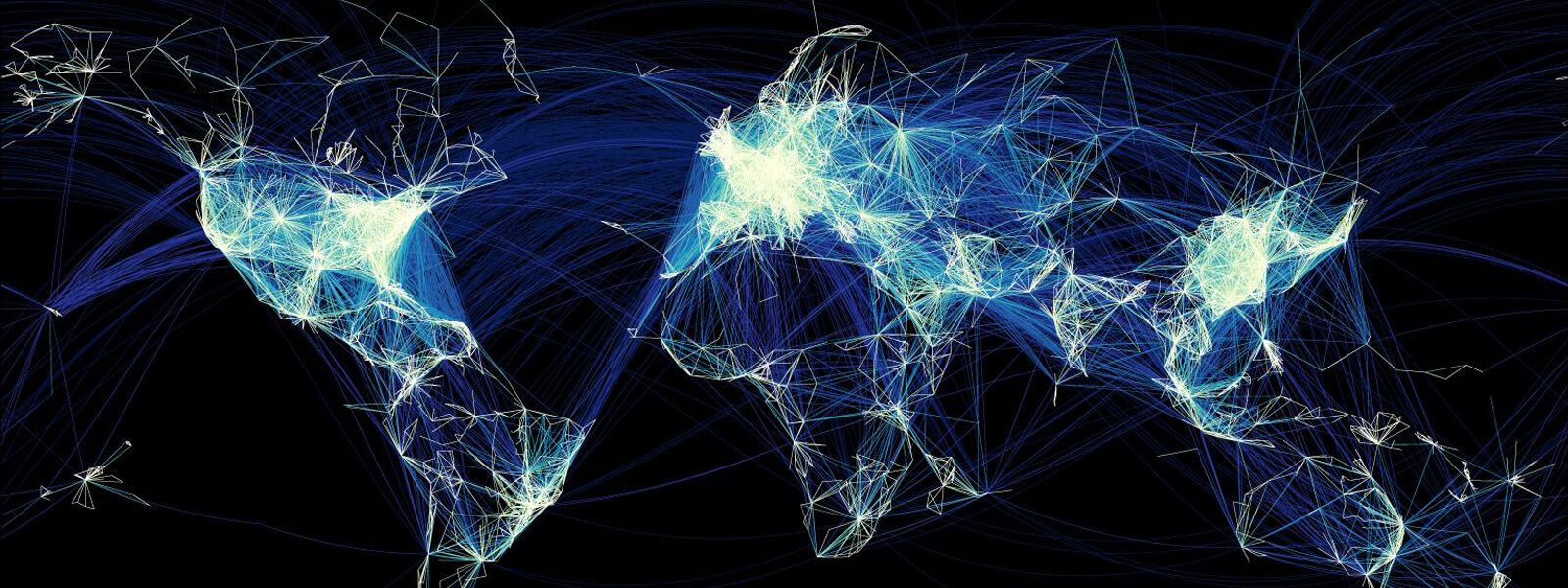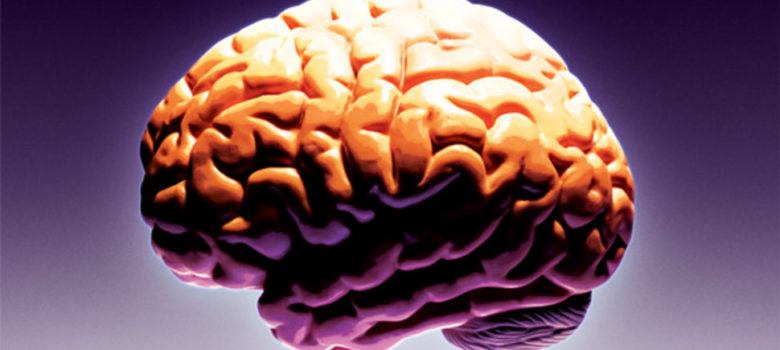

Is Early Brain Cancer Detection on the Horizon?
by Santosh Kesari
By the time patients start getting treated for brain cancer, their prognosis is often very poor, with an average survival of 14 months. Early detection of cancers is emerging as a promising field of exploration.
BANNER ILLUSTRATION BY ROB CADY FOR USNWR; PHOTO BY CREATAS/JUPITER IMAGES
WHEN I WAS A KID, ONE of my aunts was quite fond of reminding me that “a stitch in time saves nine.” But when you’re 10, it’s much more enticing to race around with your friends than diligently do your homework so it doesn’t keep piling up on your desk. The idea is simple: The sooner you can address a situation, the less trouble it will give you later.
As a neuro-oncologist and neuroscientist, I’m reminded of this more than ever, since I focus primarily on treating patients with severe brain cancer like glioblastoma. Unfortunately, by the time these patients come to me, their disease has progressed to the point where their prognosis is very poor, with an average survival of 14 months.
 In the summer of 2016, Michele Hunter came to see me with her 21-year-old son, Sean. He had been diagnosed with late-stage glioblastoma, and his doctors recommended hospice care to prepare for quick decline. Steady, quiet and determined, Michele explained that she would not settle for that option and was looking for innovative therapies to help her son. Our clinical research is driven by the urgency to find and deliver effective cures for these difficult cancers. Through targeted immunotherapy and the novel use of existing drugs on the market designed for other cancer types, we were able to give Sean eleven more months with his family and friends.
In the summer of 2016, Michele Hunter came to see me with her 21-year-old son, Sean. He had been diagnosed with late-stage glioblastoma, and his doctors recommended hospice care to prepare for quick decline. Steady, quiet and determined, Michele explained that she would not settle for that option and was looking for innovative therapies to help her son. Our clinical research is driven by the urgency to find and deliver effective cures for these difficult cancers. Through targeted immunotherapy and the novel use of existing drugs on the market designed for other cancer types, we were able to give Sean eleven more months with his family and friends.
Sean succumbed to his disease in February 2017, and I wonder how his life would have been if we as a medical community had been able to detect his brain tumor earlier. What kind of difference would a stitch in time have made?
Early detection of cancers is emerging as a promising field of exploration. Cancer is made up of a wide and complex set of many disease types, each with its own set of cellular and molecular markers. Early detection of breast cancer through screening protocols and public awareness has significantly reduced its impact. Identified causes and risk factors that can be linked to the onset of disease, such as the association of smoking with lung cancer, give us a way to rein in cancer attack.
In the case of brain cancers, there are no definitive risk factors. So what can be done to track whether someone is susceptible or has early signs of brain cancer? For these answers, we need to explore the molecular basis of disease.
 One of the most researched technologies so far is liquid biopsy, which is possible because of our enhanced ability to detect circulating tumor DNA, or ctDNA, in the blood. Developed by researchers at Saint John’s Cancer Institute and other institutions around the globe, liquid biopsies have the benefits of sampling difficult to see or reach tumors where traditional tissue biopsy may not be physically possible or could pose a danger to a vulnerable patient due to surgical complications. Recently, several companies have been actively developing diagnostics that are making their way into the clinic. Among those to emerge is Guardant Health/ whose biopsy-free Guardant360 DNA sampling technology enables disease tracking using tumor genomic data in real time. Another, Foundation Medicine, provides molecular insights into cancer through genomic profiles. Their assays report biomarker information to help match patients to approved targeted therapies, immunotherapies and clinical trials. Cynvenio, Biocept and many others are on the list of companies to watch in the liquid biopsy field bringing early cancer detection closer to reality.
One of the most researched technologies so far is liquid biopsy, which is possible because of our enhanced ability to detect circulating tumor DNA, or ctDNA, in the blood. Developed by researchers at Saint John’s Cancer Institute and other institutions around the globe, liquid biopsies have the benefits of sampling difficult to see or reach tumors where traditional tissue biopsy may not be physically possible or could pose a danger to a vulnerable patient due to surgical complications. Recently, several companies have been actively developing diagnostics that are making their way into the clinic. Among those to emerge is Guardant Health/ whose biopsy-free Guardant360 DNA sampling technology enables disease tracking using tumor genomic data in real time. Another, Foundation Medicine, provides molecular insights into cancer through genomic profiles. Their assays report biomarker information to help match patients to approved targeted therapies, immunotherapies and clinical trials. Cynvenio, Biocept and many others are on the list of companies to watch in the liquid biopsy field bringing early cancer detection closer to reality.
In this same vein, ongoing research with circulating tumor cells as indicators of disease has been geared toward the confirmation of diagnosis, treatment and targeted therapy recommendations in melanoma and eventually will be used to detect epithelial cancers. In the future, the scope of this technology could broaden to encompass more cancer types and earlier detection capabilities in a more diagnostic model.
MicroRNAs are extremely small molecules that play an important role in cancer. They regulate the production of proteins through the control of gene expression. In cancer, this regulation goes awry, and we can potentially track abnormal microRNA expression levels, which vary and create a unique and specific pattern for each cancer type. This technology can be used as a diagnostic and early detection tool in central nervous system neurodegenerative diseases such as Alzheimer’s or Parkinson’s disease, as well as some brain cancers, such as gliomas and medulloblastomas.
With marked advances in protein identification technologies, we’re able to track a large number of proteins present in blood over time, pinpoint unusual patterns and measure over- or under-expression, which would lead to unusual cell growth, which is the manifestation of cancer.
 Dr. Lee Hood, who’s pioneering new approaches to P4 medicine, is poised to make early detection of brain cancer possible. This approach suggests that as opposed to our current methodologies of being reactive to cancer, we’ll soon be able to move to a more proactive model by being “predictive, preventive, personalized and participatory [P4].” In order to achieve this, the P4 Medical Institute proposes the use of big data in an anonymized system to track multiple dimensions of individual health.
Dr. Lee Hood, who’s pioneering new approaches to P4 medicine, is poised to make early detection of brain cancer possible. This approach suggests that as opposed to our current methodologies of being reactive to cancer, we’ll soon be able to move to a more proactive model by being “predictive, preventive, personalized and participatory [P4].” In order to achieve this, the P4 Medical Institute proposes the use of big data in an anonymized system to track multiple dimensions of individual health.
Large strides in genomic sequencing reveal cellular level biomarkers in normal DNA that can be used as benchmarks to compare against sample DNA in a number of key genetic locations linked to certain cancer types. As in the case of the BRCA1 and 2 genes in breast cancer, one could imagine a scenario in the near future where detected biomarkers would indicate a predisposition for developing brain cancer. Subjects would have a choice to be screened, allowing biomarker carriers to enter into a tracking program for longitudinal early disease detection where prophylactic measures could be taken.
Knowing your genetic predisposition can play a big role in early detection.
Marlo Gottfurcht Longstreet, founder and president of the Tanner Project Foundation, lost her son Tanner when he was 11 to a glioblastoma. After diagnosis, it was discovered he carried a hereditary cancer gene – the mutant p53 – also known as Li-Fraumeni Syndrome. Marlo’s daughter, Casey, 19, carries the same gene and has a greater than 90 percent chance of getting cancer.
 Marlo contacted me to take on Casey as a healthy patient and manage her preventative care, which includes extensive blood assays, imaging (with no radiation) and ultrasounds. Our goal is to catch disease before it becomes disease. With Casey having such a high risk of cancer, being ahead of the game is key. Marlo, who takes a very proactive approach – both with her work on the Tanner Project and Casey’s health care – says, “I am a parent who lost one child, and I will not lose another. It was too late with Tanner, but not with Casey. Continuous surveillance, monitoring, looking at new approaches and working with doctors, like Dr. Kesari, who think outside the box, is crucial in keeping Casey healthy.”
Marlo contacted me to take on Casey as a healthy patient and manage her preventative care, which includes extensive blood assays, imaging (with no radiation) and ultrasounds. Our goal is to catch disease before it becomes disease. With Casey having such a high risk of cancer, being ahead of the game is key. Marlo, who takes a very proactive approach – both with her work on the Tanner Project and Casey’s health care – says, “I am a parent who lost one child, and I will not lose another. It was too late with Tanner, but not with Casey. Continuous surveillance, monitoring, looking at new approaches and working with doctors, like Dr. Kesari, who think outside the box, is crucial in keeping Casey healthy.”
The concept of a stitch in time has intrigued me over the 20-plus years that I’ve been in practice, and I believe that we’ll soon be able to apply it to many cancers, including brain cancer, to catch and prevent disease progression early on.
For Michele Hunter, Marlo Gottfurcht Longstreet and so many other families, early detection of their child’s brain cancer would have been a game-changer.
Originally appeared in U.S. News & World Report article, August 30, 2018, Is Early Cancer Detection on the Horizon?

Santosh Kesari, MD, PhD, is Director of Neuro-oncology at Pacific Neuroscience Institute and Chair and Professor, Department of Translational Neurosciences and Neurotherapeutics, Saint John’s Cancer Institute at Providence Saint John’s Health Center. He is a world leader in the innovative treatment of all types of malignant brain tumors. Dr. Kesari and his team conduct leading-edge clinical trials in immunotherapy and biomarker-based brain tumor therapies.
About the Author

Santosh Kesari
Santosh Kesari, MD, PhD, is Director of Neuro-oncology at Pacific Neuroscience Institute and Chair and Professor, Department of Translational Neurosciences and Neurotherapeutics, Saint John’s Cancer Institute at Providence Saint John’s Health Center. He is a world leader in the innovative treatment of all types of malignant brain tumors. Dr. Kesari and his team conduct leading-edge clinical trials in immunotherapy and biomarker-based brain tumor therapies.
Last updated: September 18th, 2018